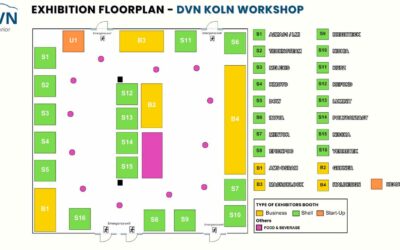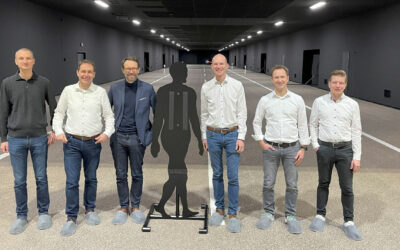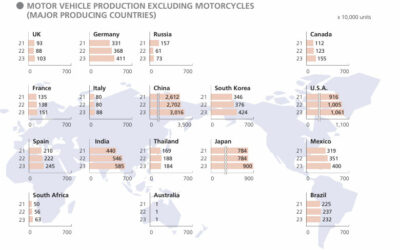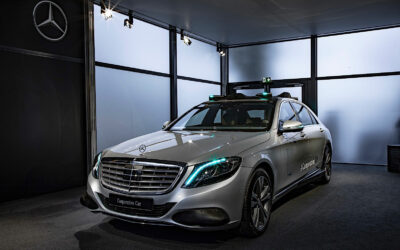We’ve published information about DMS (driver monitoring systems) in our most recent two newsletters, as part of our coverage on CES 2025. That coverage has included material about 3D Emotion, Valeo, Smart Eye, LG, Continental, Cipia, and Gentex. CES confirmed DMS presence almost everywhere. From 2026, the European Union will require all new vehicles sold in the region to be equipped with a camera-based DMS.
That all makes this a good time to review the DMS domain more broadly.
DMS principles
Using cameras mounted in the vehicle’s cabin to track the driver’s gaze, DMS detects whether a driver’s eyes are on the road. A driver distracted by a phone, children, pets, drowsiness, or intoxication can be detected. Today’s typical DMS will issue alerts to the driver if a lack of attention is detected, but it is not difficult to see how DMS could be incorporated into AV (autonomous vehicle) systems so the car could intervene to prevent an accident if the DMS determines that the driver is distracted or impaired.
But does that idea make sense? Is it still worthwhile to monitor the driver if the car is driving itself? Paul McGlone, CEO of Seeing Machines, says: « If you have a car with a steering wheel that offers either partial or full autonomous capability, there will be a requirement for a driver monitoring system. If you get to a robotaxi that has no steering wheel, there will still be requirements for monitoring in cabin, for things like health. But we think it’s going to be many decades before the majority of vehicles have no steering wheel ».
Most experts think DMS will be applied even in full AVs, as the technology will be needed for applications such as sensing passenger size and weight for the safe deployment of airbags. Beyond that, DMS could also be adapted to focus on the rider (no longer driver) experience, automatically sensing and adjusting settings to make passengers more comfortable or offering reminders that objects have been left in the vehicle.
Regulations and ratings
Euro NCAP’s Driver State Monitoring (DSM) systems are designed to enhance vehicle safety by detecting driver fatigue and distraction. These systems use technologies like eye-monitoring sensors to directly observe the driver’s alertness and attention
Seatbelt reminder
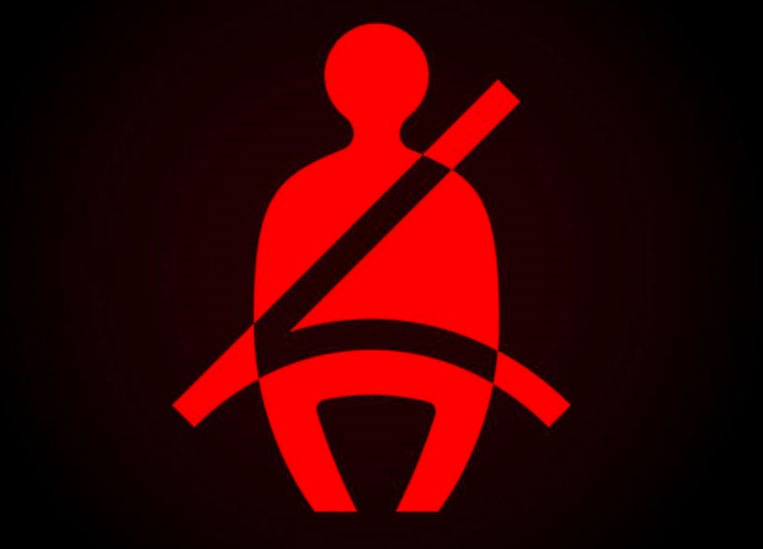
The seatbelt remains the single most important item of safety equipment in the car. Without it, occupants are unrestrained and other protective devices such as airbags are unable to work properly without the controlled, predictable kinematics which a seatbelt can provide.
Euro NCAP has, for many years, rewarded seatbelt reminders (SBR) and such systems remain a central part of occupant status monitoring. In addition to SBR, new technologies exist which can monitor the condition of the driver: whether or not they are alert and paying attention to the driving task.
Find our recent DVN Interior coverage of SBR with IEE, Toyota, Polycontact.

Established in 1997, the European New Car Assessment Programme (Euro NCAP) has been a global leader in automotive safety innovation, influencing safety practices across Europe and beyond through several rigorous safety protocols. In 2020, they introduced Driver Monitoring Systems (DMS) as part of their safe driving criteria, addressing emerging concerns around driver distraction, drowsiness, and overall alertness.
This initiative was part of a broader commitment to adapting safety standards to new technological capabilities and changing driver behavior patterns.
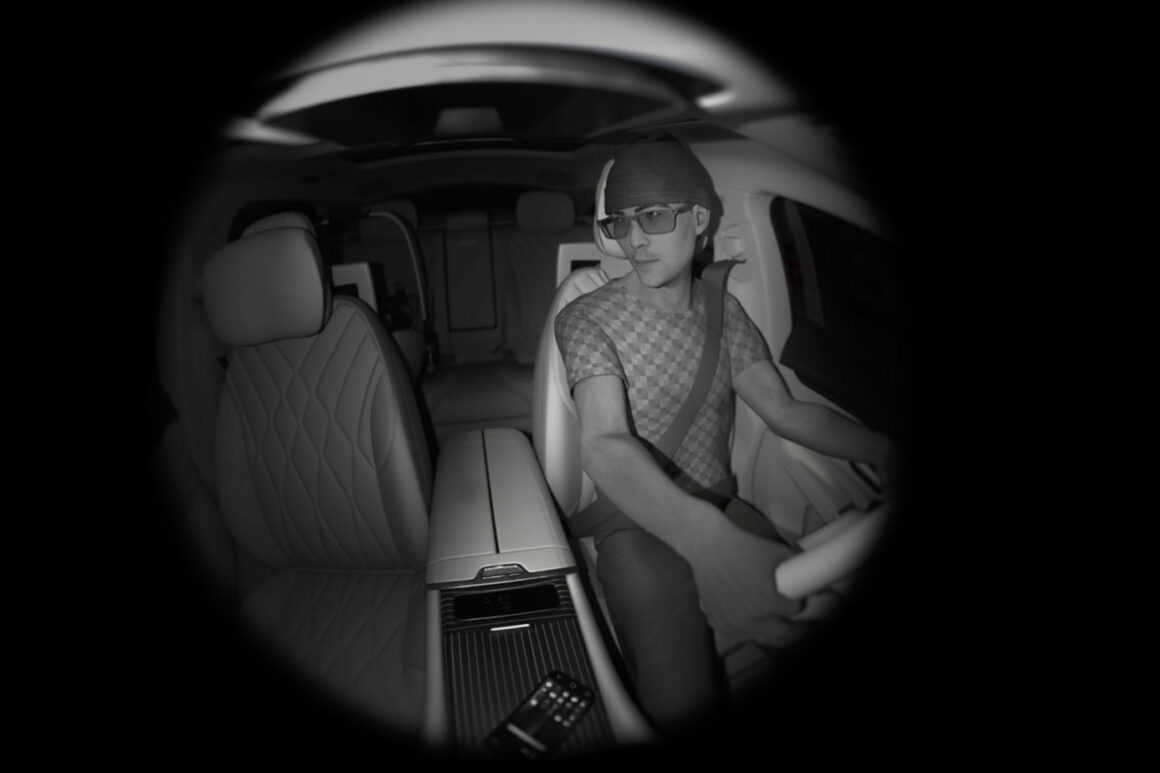
Driver Monitoring Systems in Euro NCAP
In the current implementation of the Safety Assist / Safe Driving assessment protocol (2023, Version 10.4), the DMS is assessed per its performance in these areas:
- Sensing Capabilities: The DMS must accurately monitor a diverse range of drivers, considering variations in age, gender, stature, skin tone, and other physical factors. It should function reliably in different conditions, accommodating factors such as lighting, eyewear, and facial hair.
- Driver State Detection: The DMS must identify driver states like distraction, fatigue, and unresponsiveness. This includes recognizing behaviors such as prolonged glances away from the road, signs of drowsiness, and delayed reactions.
- Vehicle Response: Upon detecting impairment, the DMS should respond with appropriate interventions, such as warnings or other safety actions, to mitigate risks. The effectiveness and timeliness of these responses are crucial in ensuring driver and occupant safety.
DMS become even more important in the 2026 implementation, which will incorporate more detailed scenarios, making DMS and Occupant Monitoring Systems (OMS) even more integral components of a vehicle’s total safety rating. Among the notable additions:
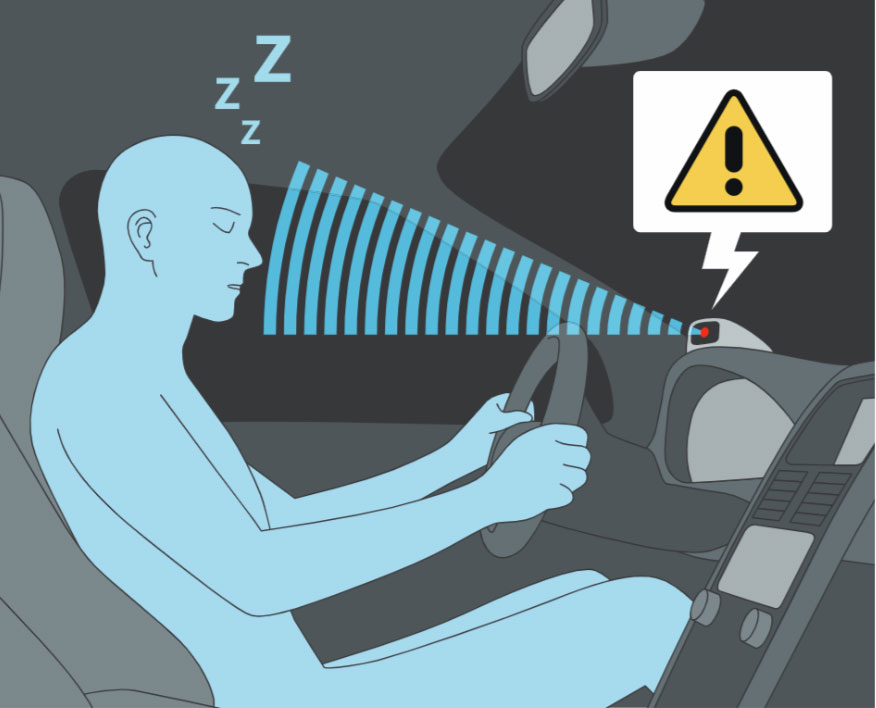
- Non-fatigue-related impairment detection: The DMS will need to extend beyond fatigue and distraction detection to assess signs of alcohol and drug impairment through behavioral indicators.
- Advanced seatbelt detection: The DMS will need to detect seatbelt usage, but also verify proper positioning and fastening for maximum effectiveness.
- Occupant Classification: Enhanced monitoring will account for passenger size, position, and posture to optimize restraint systems, such as airbags.
Driver Engagement
(note: all 2026 Euro NCAP protocols with version number 0.9 are under final review, and might undergo minor changes.)
Euro NCAP published some new definitions this past November:
Driver State Monitoring (DSM): a system which can determine the state of the driver.
Direct Monitoring: Driver state determination is supported by sensor(s) directly observing the driver.
Indirect Monitoring: Driver state determination is achieved indirectly through means other than sensor(s) directly observing the driver (e.g., steering input).
Transient state: The driver’s focus on the primary task of driving/controlling the vehicle is temporarily reduced but can be immediately reversed (e.g., visual inattentiveness due to engaging in secondary tasks).
Non-transient state: the driver’s focus on driving cannot be restored without appropriate recovery time.
Long distraction: A single, long distraction which takes the driver’s gaze away from the forward road view.
Short distraction / visual attention time sharing (VATS): Repeated short gazes away from the forward road view, such as fiddling with a phone.
Impairment: Impaired driving negatively impacts driving performance, resulting in an increased crash risk. Impairment may either build up over time (typically drowsiness/sleepiness) or present itself from the start of the journey (non-fatigue related, e.g., from the use of licit/illicit drugs).
Microsleep: A temporary episode of sleep after fatigue builds up, which may last up to several seconds.
Sleep: greater than a few seconds.
Owl- or lizard-type movement: A shift of visual attention away from the road.
Eyelid aperture: distance between the point where the straight line drawn in the y-axis direction from the midpoint of line segment connecting the outer and inner corners of the driver’s eye overlaps the lower edge of the upper eyelid and upper edge of the lower eyelid. Measured when the driver is awake and attentive.
Driver engagement assessment total points: 30
The North American regulatory island
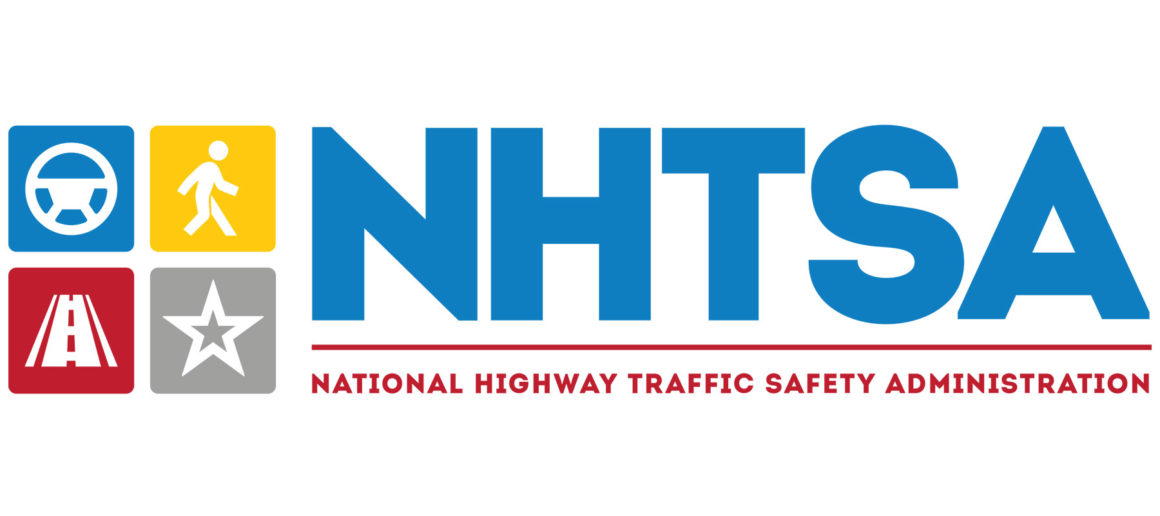
Impaired driving accounts for around one-third of road fatalities in the USA, according to NHTSA, but technology targeted at preventing it remains divisive. The agency’s advanced notice of proposed rule-making (ANPRM) was published in December 2023, gauging the practicalities of mandating alcohol and impairment detection for light-duty passenger vehicles.
Advanced (typically camera-based) DMS recently became mandatory for all new vehicles under General Safety Regulation 2 (GSR2), but alcohol detection wasn’t part of the scope. Instead, automakers are required to include a provision for installing aftermarket alcohol interlocks, which support driver rehabilitation by enabling them to avoid a ban if they test themselves at the start of every journey.
NHTSA is supporting stakeholders with the development of passive systems. Founded in 2008, the Driver Alcohol Detection System for Safety (DADSS) is a public-private partnership with the Automotive Coalition for Traffic Safety (ACTS), focused on advanced and test prototype-stage solutions. The project is named in the ANPRM, which notes that it has demonstrated technologies that provide consistent, reproducible alcohol measurement that correlates with traditional methods.
Work is ongoing, with recent developments including a collaboration between Magna and Senseair unveiled at the 2024 CES. This augments a traditional driver monitoring camera with another that measures how cabin air absorbs infrared light. Absorption differs between alcohol and CO2, and Senseair claims a detection accuracy of 0.0003 mg/l without the driver actively conducting a breath test.
Consumer view

In the meantime, consumers are cautious. A recent survey by the Future of Privacy Forum found accuracy ranked as the top concern for alcohol and impairment detection (60 and 59 per cent, respectively), followed by privacy (48 and 46 per cent of respondents). Conclusion is that the system should not function as an onboard police officer; collected data should be used solely for safety purposes and not for punitive actions.
Although NHTSA acknowledges the importance of drug detection systems, this capability will not be required as part of the final rule. The agency notes that drug use spans prescription and OTC medicines, as well as illegal substances, and the effects on users are more diverse.
Anyway, algorithms to detect drug-related impairment have ethical, legal, and logistical challenges which need further research and development.
Mitsubishi and Seeing Machines
Mitsubishi Electric Mobility Corp. (« MEMCO ») has announced a collaboration agreement with Seeing Machines covering DMS/OMS and Guardian (Fleet). This is a collaboration agreement, not a simple tier-1 / tier-2 purchase agreement, which implies that from now MEMCO will bid only Seeing Machines for auto RFQs.
Seeing Machines now has three global tier-1 partners, each with a slightly different regional automaker concentration: Magna (N. America); Valeo (Europe); MEMCO (Japan). All are established in China, too.
It is assumed Mitsubishi Motors, Nissan, and Subaru will be the first automakers targeted by MEMCO. Toyota is the big win but has a well-established DMS partnership with Aisin/Denso; Mazda’s decision for DMS is unknown but likely still in play.
The strategy appears to center on MEMCO targeting Denso for DMS in both auto RFQs and commercial vehicles. Denso offers aftermarket DMS for trucks (using signals from Xperi) mostly in Japan. Guardian Gen3 is now to be marketed in the fleet aftermarket in N. America, Europe and Japan using the established MEMCO distribution channel, instantly massively expanding customer reach.
MEMCO has a 19.9-per-cent stake in Seeing Machines as part of the agreement, now making it the largest investor. This number is significant and signals an intent for a real long-term partnership. Seeing Machines is pursuing close partnerships across auto and commercial vehicles, rather than competing with tier-1 partners, by becoming a ‘software tier-1’—blurring the lines between collaboration partner and competitor.
FEV’s ‘AI’ DMS
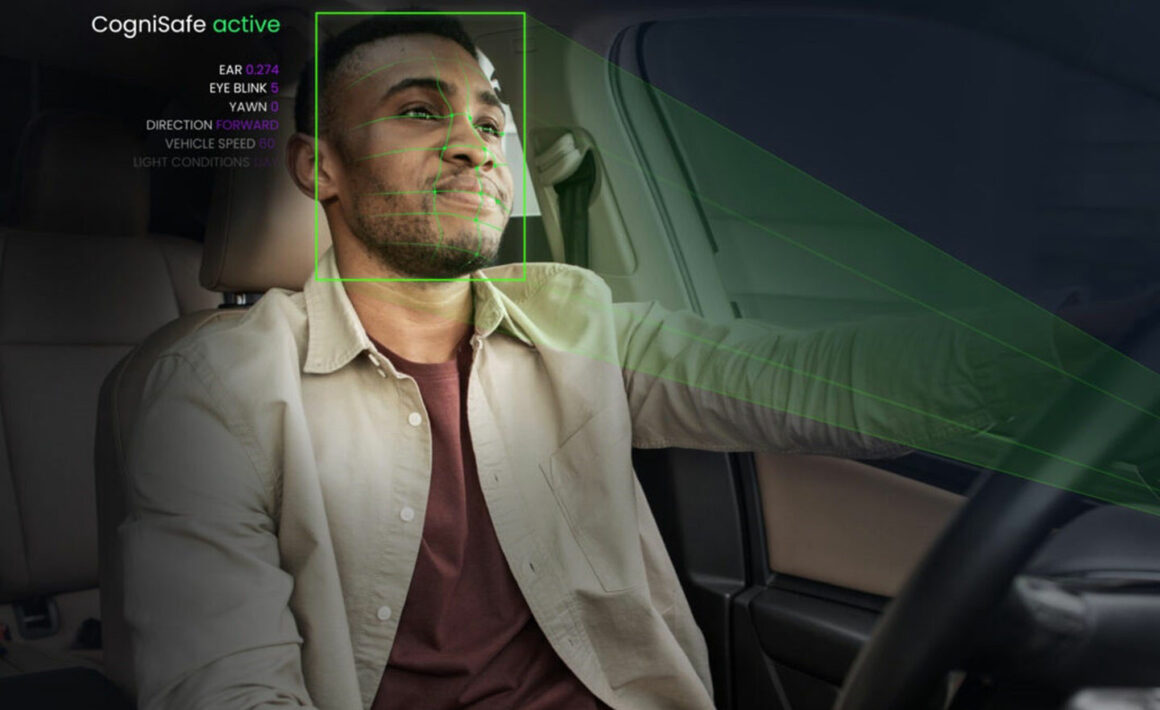
FEV, a Germany-based engineering services provider for the automotive industry, has introduced CogniSafe, an ‘AI’-supported DMS.
CogniSafe is designed to enhance road safety by detecting driver inattention, fatigue, and distraction in real-time, the company claims. This new system uses deep learning and computer vision technologies to ensure driver alertness under various conditions. It features a network of cameras operating in both visible light and infrared spectrums, enabling comprehensive analysis of the driver’s behaviour from multiple angles.
The system is equipped to monitor the driver’s gaze, evaluates eye conditions such as the percentage of eye closure (PERCLOS), and assesses head posture to determine levels of alertness and fatigue.
FEV Intelligent Mobility & Software group vice-president Dr Thomas Hülshorst said: “CogniSafe is a holistic, innovative system that uses a variety of sensors and combines them with ‘artificial intelligence’ to precisely analyze driver behavior and alertness. With our latest development, we are actively reducing accidents caused by human error. At over 90 per cent, these make up the majority of all accidents ».
Moreover, CogniSafe is adept at recognizing behaviors that may compromise safety, like texting or drinking while driving. Upon detection, it alerts the driver through visual and acoustic signals and can trigger safety measures, including emergency braking or lane assistance activation.
